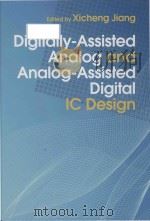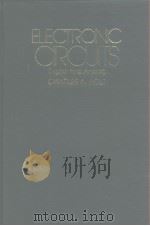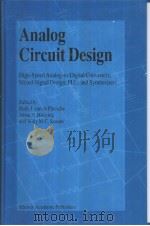《ELECTRONIC ANALOG COMPUTERS(D-c Analog Computers)》
| 作者 | 编者 |
|---|---|
| 出版 | 未查询到或未知 |
| 参考页数 | 452 |
| 出版时间 | 没有确切时间的资料 目录预览 |
| ISBN号 | 无 — 求助条款 |
| PDF编号 | 811327688(仅供预览,未存储实际文件) |
| 求助格式 | 扫描PDF(若分多册发行,每次仅能受理1册) |
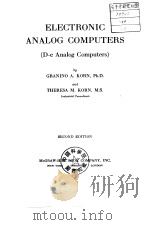
Chapter 1.Introduction to D-c Analog Computers1
1.1.Introduction1
1.2.How an Electronic Differential Analyzer Represents Mathematical Relations7
1.3.Basic Computing Elements:Algebraic Operations12
1.4.Electrical Integration and Differentiation18
1.5.Direct-analog Representation of Mathematical or Physical Relations.Networks and Operational Amplifiers20
1.6.Complete D-c Analog-computer Installations26
Chapter 2.Practical Setup Procedure30
2.1.Introduction30
2.2.Machine Variables and Scale Factors30
2.3.Choice of Time Scale32
2.4.Machine Equations and Block Diagrams35
2.5.D-c Analog-computer Solution of Linear Ordinary Differential Equations with Constant Coefficients40
2.6.Initial Conditions44
2.7.D-c Analog-computer Solution of Linear Ordinary Differential Equations with Variable Coefficients46
2.8.D-c Analog-computer Solution of Nonlinear Ordinary Differential Equations53
2.9.Summary of Setup Procedure56
2.10.Other Methods for Handling Scale Factors58
2.11.D-c Analog Computers as Equation Solvers61
Chapter 3.The Application of D-c Analog Computers to Representative Practical Problems69
3.1.Problem Preparation69
3.2.D-c Amalog-computer Study of a Vibration Absorber and of a Simple Automobile Suspension72
3.3.Representation of Dynamical Systems in General.Forces,Stops,and Constraints80
3.4.D-c Analog-computer Studies of Automatic Control Systems:Servomechanisms and Process Control92
3.5.D-c Analog-computer Setup for a Trajectory Computation:The Trajectory of a Slow Spherical Projectile with Air Resistance110
3.6.Introduction to D-c Analog-computer Methods for Solving Aircraft Flight Equations115
3.7.Analysis of Small Aircraft Motions in the Pitch Plane:D-c Analog-computer Solution of the Linearized Flight Equations120
3.8.Application of D-c Analog Computers to the Design and Testing of Automatic Pilots128
3.9.Representation of Random Processes.Use of Noise Generators140
3.10.Boundary-value Problems,Eigenvalue Problems,and Solution of Partial Differential Equations142
3.11.D-c Analog-computer Solution of Linear Programming Problems147
3.12.Miscellaneous Problems.A List of D-c Analog-computer Applications151
Chapter 4.Theory and Design of Linear Computing Elements.Coefficient-setting Potentiometers and Operational Amplifiers155
4.1.Multiplication by Constant Coefficients:Potentiometers155
4.2.Error Analysis for a Class of Operational Amplifiers162
4.3.Integrator Performance166
4.4.Some Electronic Integrators171
4.5.The Parallel-feedback Integrator:Error Analysis of a D-c Integrator175
4.6.Regenerative Operational Amplifiers184
4.7.Errors in the Solution of Linear Homogeneous Differential Equations with Constant Coefficients188
Chapter 5.D-c Amplifiers for Computer Applications190
5.1.Principles of D-c Amplifier Operation190
5.2.D-c Amplifier Design196
5.3.Special D-c Amplifier Circuits203
5.4.Stabilization of Feedback Amplifiers214
5.5.Practical Examples of Computer Amplifier Design223
5.6.Improved D-c Amplifier Design:Automatic Balancing Circuits231
5.7.Examples of Computer Amplifiers Employing Automatic Balancing Circuits239
5.8.Automatic Balancing Circuits Employing Photoelectric Choppers244
5.9.Hints for the Construction of D-c Amplifiers.Choice of Components248
5.10.Transistor D-c Amplifiers250
Chapter 6.Multipliers and Function Generators251
6.1.Introduction and Survey251
6.2.Miscellaneous Devices Permitting Multiplication of Two Machine Variables252
6.3.Examples of Multiplying Devices Using Feedback to Linearize the Gain Characteristics259
6.4.Multiplier Circuits Based on Simultaneous Pulse-amplitude Modulation and Pulse-width Modulation268
6.5.Logarithmic Multipliers,Quarter-square Multipliers,and Related Circuits280
6.6.Function Generators284
6.7.Generation of Functions by Means of Diodes and Other Switching Devices290
6.8.Computer Servomechanisms for D-c Analog Computers299
6.9.Servo-driven Potentiometers and Related Circuits313
6.10.Tapped Potentiometers as Function Generators321
6.11.Representation of Vectors in Different Coordinate Systems329
6.12.Division and Generation of Inverse Functions338
6.13.Generation of Functions of Two or More Variables340
Chapter 7.Auxiliary Circuits and Computer Operation345
7.1.Introduction of Initial Conditions.HOLD Condition345
7.2.Control Circuits349
7.3.Recording Equipment360
7.4.Computer Power Supplies369
7.5.Summary of D-c Analog-computer Operating Procedure380
7.6.Checking of Solutions381
7.7.D-c Analog Computers with Automatic Programming Features383
Chapter 8.The Design of Complete D-c Analog-computer Instal-lations387
8.1.Complete D-c Analog-computer Installations:Composite Design387
8.2.Construction,Wiring,and Installation389
8.3.Front-panel Layout and Patch-bay Design391
8.4.Examples of Complete D-c Analog Computers395
8.5.Repetitive Computers407
Tables of Special Computer Setups413
Bibliography(to 1950)429
Bibliography(since 1950)432
Examples of Differential Analyzer Computations440
Author Index441
Subject Index445
《ELECTRONIC ANALOG COMPUTERS(D-c Analog Computers)》由于是年代较久的资料都绝版了,几乎不可能购买到实物。如果大家为了学习确实需要,可向博主求助其电子版PDF文件。对合法合规的求助,我会当即受理并将下载地址发送给你。
高度相关资料
-

- WATER DEVELOPMENT AND MANAGEMENT PART 1
- 1978 PERGAMON PRESS
-
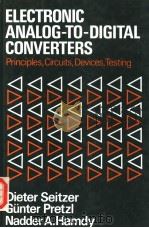
- ELECTRONIC ANALOG-TO-DIGITAL CONVERTERS
- JOHN WILEY & SONS
-

- ELECTRONIC COMPUTERS PRINCIPLES AND APPLICATIONS
- 1956 PHILOSOPHICAL LIBRARY
-

- PERSPECTIVES IN AMERICAN STUDIES A READER BY AMERICAN SCHOLARS IN CHINA
- 1988年03月第1版 上海外语教育出版社
-

- COMPUTERS/PROCESSORS(FOR ELECTRONIC WARFARE)
- 1978 NAVAL RESEARCH LABORATORY WASHINGTON D.C
-

- ELECTRONIC COMPUTERS PRINCIPLES AND APPLICATIONS
- 1957 PHILOSOPHICAL LIBRARY
-
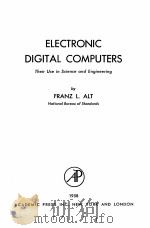
- ELECTRONIC DIGITAL COMPUTERS
- 1958 ACADEMIC PRESS INC.
-
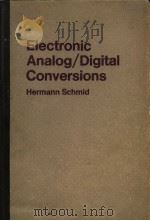
- ELECTRONIC ANALOG/DIGITAL CONVERSIONS
- 1970 VAN NOSTRAND REINHOLD COMPANY
-
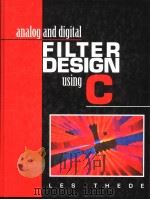
- ANALOG AND DIGITAL FILTER DESIGN USING C
- 1996 PRENTICE HALL PTR
-
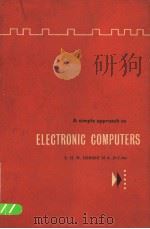
- A SIMPLE APPROACH TO ELECTRONIC COMPUTERS
- 1960 BLACKIE AND SON LIMITED
-
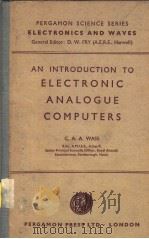
- INTRODUCTION TO ELECTRONIC ANALOGUE COMPUTERS
- 1955 PERGAMON PRESS
-
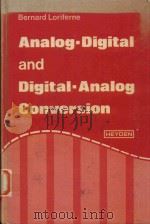
- ANALOG-DIGITAL AND DIGITAL-ANALOG CONVERSION
- 1981 HEYDEN
提示:百度云已更名为百度网盘(百度盘),天翼云盘、微盘下载地址……暂未提供。➥ PDF文字可复制化或转WORD
